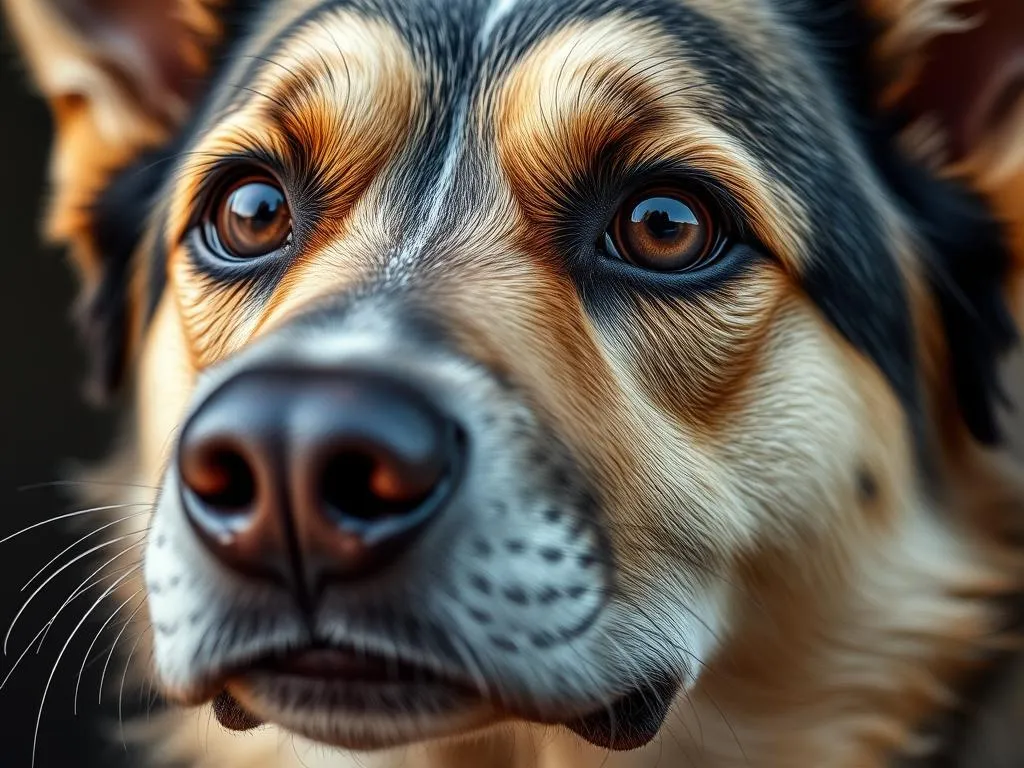
Introduction
Maintaining optimal eye health is crucial for our canine companions, as their eyes play a significant role in their overall well-being. Dogs rely heavily on their vision to navigate their environment, communicate with us, and partake in their daily activities. Just like with humans, early detection of eye issues can mean the difference between simple treatment and more complex interventions. In this article, we’ll explore essential facts about dogs’ eyes, their anatomy, common issues they face, and proactive measures you can take to safeguard your dog’s vision.
Understanding Dogs’ Eyes
Anatomy of a Dog’s Eye
A dog’s eye consists of several key components that work harmoniously to provide clear vision. Here are the main parts:
- Cornea: The transparent front part of the eye that helps focus light.
- Lens: Located behind the cornea, it adjusts to focus on objects at varying distances.
- Retina: The light-sensitive layer at the back of the eye that converts light into signals sent to the brain.
Interestingly, the anatomy of dogs’ eyes differs from that of humans in several ways. For instance, dogs have a tapetum lucidum, a reflective layer behind the retina that enhances their night vision. This unique feature allows dogs to see well in low light conditions, making them excellent nocturnal hunters.
Common Eye Colors in Dogs
The eye color of dogs can vary significantly among different breeds, ranging from deep brown to striking blue or even a mix of colors. For example, Siberian Huskies are known for their piercing blue eyes, while many Labrador Retrievers typically have brown eyes. The genetic factors influencing eye color can include the amount of pigmentation present and specific genes responsible for color traits.
Importance of Eye Health in Dogs
Common Eye Problems in Dogs
Dogs can encounter various eye problems throughout their lives. Some of the most common issues include:
-
Cataracts: These are cloudy areas in the lens that can lead to vision impairment. Older dogs are more susceptible, but cataracts can also develop due to diabetes or genetics.
-
Glaucoma: A painful condition caused by increased pressure within the eye, which can lead to blindness if not treated promptly.
-
Conjunctivitis: Often referred to as pink eye, this inflammation of the conjunctiva can occur due to allergies, infections, or irritants.
-
Corneal ulcers: Open sores on the cornea, often resulting from trauma, infections, or dry eye conditions.
Signs of Eye Problems in Dogs
Being vigilant about your dog’s eye health is vital. Common signs that may indicate an eye problem include:
-
Excessive tearing: If you notice your dog’s eyes watering more than usual, it could signal an underlying issue.
-
Redness or swelling: Any inflammation around the eyes is a cause for concern and warrants further investigation.
-
Cloudy or squinting eyes: Changes in clarity or squinting can indicate discomfort or vision problems.
-
Behavioral changes: If your dog seems more irritable, hesitant to play, or avoids bright lights, these may be signs of eye discomfort.
Regular Eye Care for Dogs
Routine Eye Examinations
Just as humans benefit from regular eye check-ups, so do dogs. Routine veterinary examinations are essential for detecting eye issues early on. The recommended frequency of these exams can depend on factors such as your dog’s age and breed. Younger and healthier dogs might only need annual check-ups, while older dogs or those with a history of eye problems may require more frequent evaluations.
Home Eye Care Tips
As a dog owner, you can also take steps to maintain your pet’s eye health at home:
-
Cleaning techniques: Use a damp cloth or specialized wipes to gently clean around your dog’s eyes, removing any discharge or debris.
-
Recommended tools: Saline solutions or veterinary-approved eye wipes can help keep your dog’s eyes clean without causing irritation.
-
When to seek veterinary help: If you notice persistent discharge, changes in eye appearance, or any signs of discomfort, consult your veterinarian promptly.
Preventative Measures for Eye Health
Nutrition and Eye Health
A well-balanced diet is fundamental to your dog’s overall health, including their eye health. Foods rich in antioxidants, such as vitamins A, C, and E, can support retinal health and may reduce the risk of cataracts. Additionally, supplements like Omega-3 fatty acids can benefit eye health by maintaining the integrity of cell membranes in the eyes.
Environmental Factors
Creating a clean and safe environment for your dog can help prevent eye irritations. Here are some tips:
-
Keeping a clean environment: Regular cleaning can help eliminate dust, allergens, and irritants that may affect your dog’s eyes.
-
Protective eyewear for dogs: In certain circumstances, such as during outdoor adventures or in harsh weather conditions, special dog goggles can protect their eyes from debris and UV rays.
Common Myths About Dogs’ Eyes
Myth: Dogs See Only in Black and White
Contrary to popular belief, dogs do not see only in black and white. While their color vision differs from humans, dogs can see shades of blue and yellow. They have fewer color receptors in their retinas than humans, which may make their world appear less vibrant, but they still perceive colors.
Myth: Eye Problems Are Only for Older Dogs
Another misconception is that eye issues only affect older dogs. In reality, younger dogs can develop eye problems due to genetic predispositions, injuries, or infections. Early prevention and monitoring are key components in ensuring lifelong eye health.
When to Seek Veterinary Care
Emergency Situations
Be aware of signs that require immediate veterinary attention, including:
-
Trauma: Any injury to the eye should be treated as urgent.
-
Sudden blindness: If your dog suddenly loses the ability to see, it’s crucial to seek emergency care.
Regular Check-up Guidelines
Establishing a proactive care routine can significantly benefit your dog’s eye health. Regular check-ups, timely vaccinations, and consistent monitoring of any changes in behavior or appearance can help catch potential problems early.
Conclusion
Maintaining your dog’s eye health is an essential part of responsible pet ownership. Understanding common eye conditions, recognizing signs of distress, and taking proactive measures can help ensure your furry friend enjoys a lifetime of healthy vision. By monitoring your dog’s eyes and consulting with your veterinarian when necessary, you can help prevent serious issues and ensure their eyes remain bright and healthy.
Feel free to share your experiences and any questions you may have about your dog’s eye health in the comments below!
FAQs About Dogs’ Eyes
What are the most common eye diseases in dogs?
Some of the most common eye diseases in dogs include cataracts, glaucoma, conjunctivitis, and corneal ulcers.
How can I tell if my dog has an eye infection?
Signs of an eye infection may include excessive tearing, redness or swelling, discharge, and squinting.
Can dogs wear sunglasses, and are they beneficial?
Yes, dogs can wear sunglasses designed for them. These can protect their eyes from UV rays and debris, especially during outdoor activities.
What should I do if I notice something unusual about my dog’s eyes?
If you observe any unusual signs or changes in your dog’s eyes, it’s best to consult your veterinarian for a thorough examination and appropriate care.









